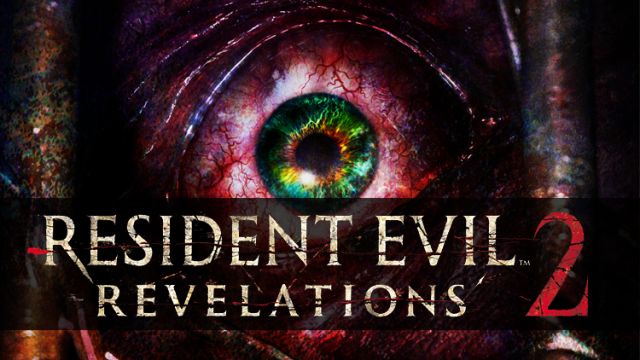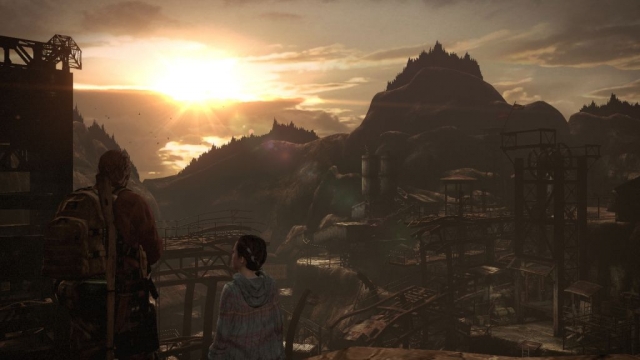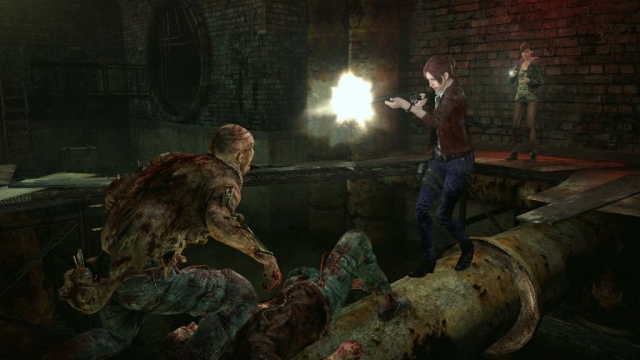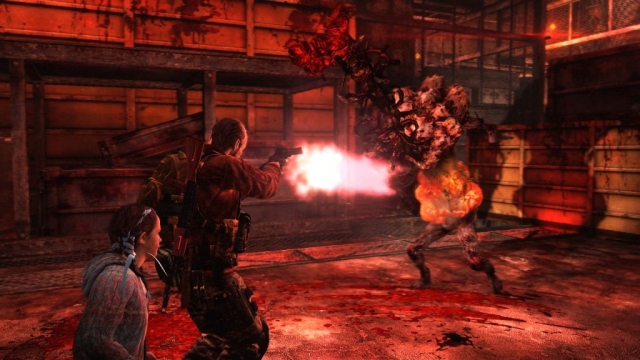Resident Evil Revelations 2

There are a few weak spots in Resident Evil: Revelations 2. It’s an experiment by Capcom, but it’s almost entirely a financial one; it’s a four-episode series of games, rich with fanservice and packed with DLC, at a low overall price point. Most of the systems are hemstitched together from previous entries in the series, particularly Resident Evil Zero, from which it draws its “zapping” system and the ability to craft grenades or medical supplies from scavenged items.
What’s strange is that this works in the game’s favor. The first Revelations was longer and had its moments, but turned into a pretzel knot of a conspiracy story by its end, while Resident Evil 6 tried to do too much at once. Revelations 2 is low-key, intense, and focused by comparison, with a surprisingly down-to-earth script and plot, and it works. Sometimes it comes off like a bargain-bin knockoff of itself, with murky graphics and the occasional finicky contextual command, but in the end, it all comes together.
Each episode of Revelations 2 is split in half. In the first section, Claire Redfield and Moira Burton try to stay alive on an island that’s been set up as a lunatic testing ground for an unseen woman who calls herself the Overseer. In the second, Barry Burton, Moira’s father and one of the most popular, least-used characters in the franchise, comes to the island six months later to try and figure out what happened to his daughter and Claire. He’s helped in this by a strange little girl named Natalia, who has the ability to see the island’s monsters through walls.
In both sections, Claire and Barry do most of the fighting and are the only characters that can really die; both Moira and Natalia can take damage and can even be incapacitated, but heal rapidly once they’re out of danger. Moira’s got a phobia about guns and refuses to use anything more dangerous than a crowbar and flashlight, while Natalia’s maybe ten years old and can’t do much more than hit things with a brick. In both cases, you control both characters at once, switching between them on the fly with the push of a button.
In practice, this means you spend a lot of time as the noncombatants. Moira and Claire work well together, as Moira can stun enemies by blinding them with her flashlight, then impale them with the crowbar once Claire’s knocked them over. Natalia doesn’t even have that going for her, but she can see weak spots and monsters that would otherwise be invisible. (You don’t really appreciate Natalia, I think, until some of the invisible enemies from Barry’s game suddenly show up in Claire’s, where you don’t have Natalia’s clairvoyance to spot them with.)
In either scenario, the combat is pretty easy. Claire and Moira can effectively tag-team enemies, and Barry comes to the island with a full weapons loadout. The game is very good about changing things up, however, throwing in bosses that soak up most of your available supplies or situations where the atmosphere and environment can make you more paranoid than you really have to be. The island is easily one of the creepiest locations the series has ever produced, and the sound design is top-notch. (The graphics, it has to be said, could be better. They’re serviceable, but that’s about it.) One of the hallmarks of a decent to good survival-horror game has always been providing you with everything you need to get through the game while simultaneously convincing you that you don’t, and Revelations 2 accomplishes that easily.
One of the primary draws of Revelations 2 is Raid Mode, which made its debut in the first Revelations and repackages the game as a bizarre dungeon crawler. Each level throws you into an environment from the last couple of Resident Evil games and ends when you’ve killed all the enemies inside, with loot, better weapons, and gun mods at stake if you can survive.
It’s just as addictive as the first version was, although it’s made to be monetized; you can already tell that Capcom plans to plug in an immense amount of DLC, and they’ve already put two of the most popular characters in the series’s history behind a paywall. The characters also have much less personality in Revelations 2‘s raid mode, without start or ending quotes and no real individual flavor outside of passive skills, and the stage selection feels like they decided to use things they already had lying around. It’d be amazing if they’d thrown in various locations from even older games–the Raccoon City police department, the Spencer mansion, the Ashfords’ Antarctic base, the Ganado village, etc.–but instead the selection seems oddly narrow.
Buying the season pass also gets you two new scenarios, “The Struggle” and “Little Miss,” and discussing either in detail would require a spoiler warning. Both are short episodes that fill in blank spots in the game’s main plot, and while they’re over with almost before they get started, they stand up well against the main game. “The Struggle” is practically a throwback to RE4‘s Mercenaries minigame, with an emphasis on combat and a bizarre system of “lives,” while “Little Miss” is a stealth-based game with no combat, and they do a decent job of showing off how flexible the engine is.
Revelations 2 isn’t quite a return to form for the series or anything quite so dramatic, but it’s an example of doing more with less. When put up against the big-budget, high-octane action movies of the last couple of Resident Evil games, it looks even better; it’s not just a shoot-‘em-up playing in a horror game’s toybox, but an effective horror game in its own right. It may have begun as an obvious attempt to explore the digital-download market, but if that’s what it takes for Capcom to make more games like this, bring it on.
Reviewed By: Thomas Wilde
Publisher: Capcom
Rating: 85%
——————————————————————————–
This review is based on a digital copy of Resident Evil Revelations 2 for the PC provided by Capcom.
 Game Over Online
Game Over Online
















